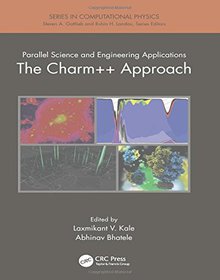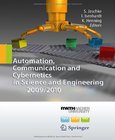Parallel Science and Engineering Applications
The Charm++ Approach

Book Details:
| Publisher: | CRC Press |
| Series: | CRC Press |
| Author: | Laxmikant V. Kale |
| Edition: | 1 |
| ISBN-10: | 1466504129 |
| ISBN-13: | 9781466504127 |
| Pages: | 314 |
| Published: | Oct 28 2013 |
| Posted: | Nov 19 2014 |
| Language: | English |
| Book format: | |
| Book size: | 5.95 MB |
Book Description:
Developed in the context of science and engineering applications, with each abstraction motivated by and further honed by specific application needs, Charm++ is a production-quality system that runs on almost all parallel computers available. Parallel Science and Engineering Applications: The Charm++ Approach surveys a diverse and scalable collection of science and engineering applications, most of which are used regularly on supercomputers by scientists to further their research. After a brief introduction to Charm++, the book presents several parallel CSE codes written in the Charm++ model, along with their underlying scientific and numerical formulations, explaining their parallelization strategies and parallel performance. These chapters demonstrate the versatility of Charm++ and its utility for a wide variety of applications, including molecular dynamics, cosmology, quantum chemistry, fracture simulations, agent-based simulations, and weather modeling. The book is intended for a wide audience of people in academia and industry associated with the field of high performance computing. Application developers and users will find this book interesting as an introduction to Charm++ and to developing parallel applications in an asynchronous message-driven model. It will also be a useful reference for undergraduate and graduate courses in computer science and other engineering disciplines. Courses devoted to parallel programming and writing of parallel CSE applications will benefit from this book.
Download Link:
Related Books:
Technical Java
Applications for Science and Engineering
Advanced Java for Engineers and Scientists gives the reader all the information needed to use Java to create powerful, versatile, and flexible scientific and engineering applications. The book is full of practical example problems and valuable tips. Grant Palmer, a research scientist himself, goes in-depth into advanced technical programming concepts applicable to scientific-oriented applications, such as solving differential equations, data modeling, integration of functions, and creating generic class libraries. The last section of the book shows readers how Java can be used to develop GUI or Web-based front-ends to scientific or engineering programs....
Automation, Communication and Cybernetics in Science and Engineering
2009/2010
The book presents a representative selection of all publications published between 01/2009 and 06/2010 in various books, journals and conference proceedings by the researchers of the institute cluster: IMA - Institute of Information Management in Mechanical Engineering ZLW - Center for Learning and Knowledge Management IfU - Institute for Management Cybernetics, Faculty of Mechanical Engineering, RWTH Aachen University The contributions address the cluster's five core research fields: suitable processes for knowledge- and technology-intensive organizations, next-generation teaching and learning concepts for universities and the economy, cognitive IT-supported processes for heterogeneous and cooperative systems, target group-adapted user models for in...
Materials Science and Engineering
An Introduction
5th Edition
Bill Callister continues his dedication to student understanding by writing in a clear and concise manner, using terminology that is familiar and not beyond student comprehension. Topics are organized and explained in an approachable manner, so that even instructors who do not have a strong materials background (i.e., those from mechanical, civil, chemical, or electrical engineering, or chemistry departments) can teach from this, already successful, text....
2007 - 2021 © eBooks-IT.org



